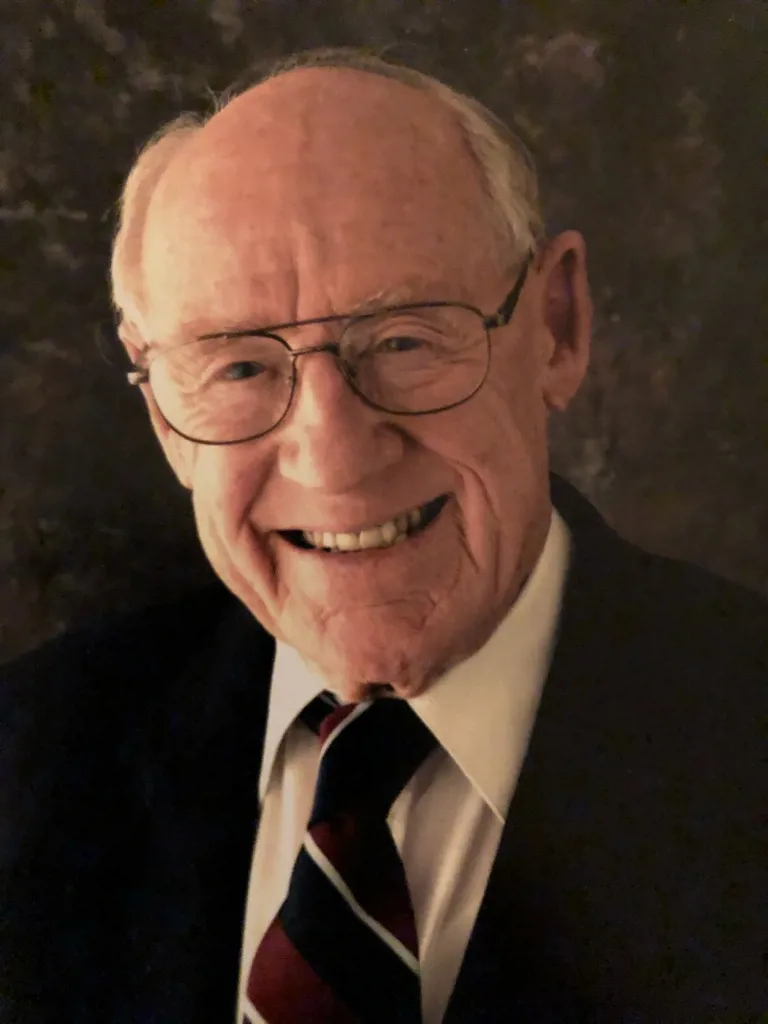Winsbury James (Jim) Robinson FIET, 1921 – 2020
Published: Fri 20 Mar 2020
Published: Fri 20 Mar 2020
Jim Robinson, former Auckland, New Zealand Branch Chair and Fellow of the Institution of Electrical Engineers, has died in his 99th year.
Jim was born in Taihape, New Zealand in 1921 where his father was an engine driver, operating steam engines that drove sawmills. After attending Feilding High School, Jim initially joined the New Zealand Post Office before moving to Wellington City Tramways where he became particularly interested in rewinding the DC armatures.
With the start of WW2 and conscription, Jim, aged 19, joined the Royal New Zealand Air Force (RNZAF) and undertook pilot training in NZ, Canada and the UK, flying spitfire fighters in North Africa, Algeria, Italy, India and Burma (Myanmar). He became a celebrated fighter pilot in 485 RNZAF Squadron and the 81 RAF Squadron by shooting down a number of enemy aircraft, earning numerous accolades. At his funeral on the 20 February with military honours, a RNZAF P3 aircraft did a flyby in recognition of Jim’s service to his country and a restored Spitfire flew loops overhead.

After completing his University study at the University of Canterbury in Christchurch, New Zealand, Jim went to work on the construction of the new 220kV transmission line from Bunnythorpe to Haywards followed by the Whakamaru to Otahuhu line, as well as substations at Otahuhu and Bunnythorpe. In 1953 Jim was appointed Assistant Engineer at Auckland Electric Power Board where he was involved in substations and underground cabling at a time when Auckland was expanding rapidly.
As Area Engineer at Auckland Electric Power Board, Waiheke Island became one of his responsibilities where the broken terrain at the eastern end of the island was a challenge to get poles into position and erect lines for the new supply. Jim, with war-time experience of flying, considered that helicopters might be able to deliver the required poles to the most difficult locations. In 1982, the heaviest load that could be moved by the largest helicopter available was 1000 lbs. By removing a few feet off the end of the timber poles, the weight could be reduced and the poles could be successfully delivered into pre-dug holes. Stringing the wires across the difficult terrain required many trials using the helicopter before a sophisticated cable drum breaking system was developed.
In 1973 Jim was invited to undertake a World Bank role as Chief Electrical Engineer and then General Manager of the Fiji Electricity Authority. This involved training local engineers in how to manage the system along with the challenging need to erect new lines through communal landholdings. The country’s first Hydro-electric station was initiated while Jim was General Manager. It was a challenging assignment to work with officials who didn’t have the necessary knowledge or technical skills.
Having served on the Auckland Branch committee for over 10 years in different roles, Jim was elected Chairman in 1972. During his Chairmanship, he organised a lively programme, including continuing education courses for engineers and inaugurated an annual retired engineer’s luncheon, which has continued ever since.
Jim was known as an excellent negotiator and he used these skills in many different areas in work and outside in the public arena. He was also a fervent environmentalist.
He was a member of the Masonic Lodge achieving the role of Grand Master on 2 occasions.